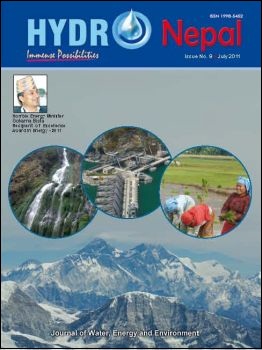The Concept of Wastes to Energy Using Sugary Wastes
DOI:
https://doi.org/10.3126/hn.v9i0.7075Keywords:
Anaerobic digestion, sugary wastes, carbon oxygen demand, biogas, PakistanAbstract
Abstract: This study was designed using actual effluent from the sugary mills in an Up-flow Anaerobic Sludge Blanket (UASB) Reactor to evaluate treatability performance. The reactor was started-up in step-wise loading rates beginning from 0.05kg carbon oxygen demand (COD)/m3-day to 3.50kg-COD/m3-day. The hydraulic retention time (HRT) was slowly decreased from 96 hrs to eight hrs. It was observed that the removal efficiency of COD of more than 73% can be easily achieved at an HRT of more than 16 hours corresponding to an average organic loading rate (OLR) of 3.0kg-COD/m3-day, at neutral pH and constant temperature of 29°C. The average VFAs (volatile fatty acids) and biogas production was observed as 560mg/L and 1.6L/g-CODrem-d, respectively. The average methane composition was estimated as 62%. The results of this study suggest that the treatment of sugar mills effluent with the anaerobic technology seems to be more reliable, effective and economical.
DOI: http://dx.doi.org/10.3126/hn.v9i0.7075
Hydro Nepal Vol.9 July 2011 57-62
Downloads
Downloads
Published
How to Cite
Issue
Section
License
The copyright of the articles and papers published is held by HYDRO Nepal Journal.
The views and interpretation in this journal are those of author(s), and HYDRO Nepal does not bear any responsibility for the views expressed by authors in the journal.




